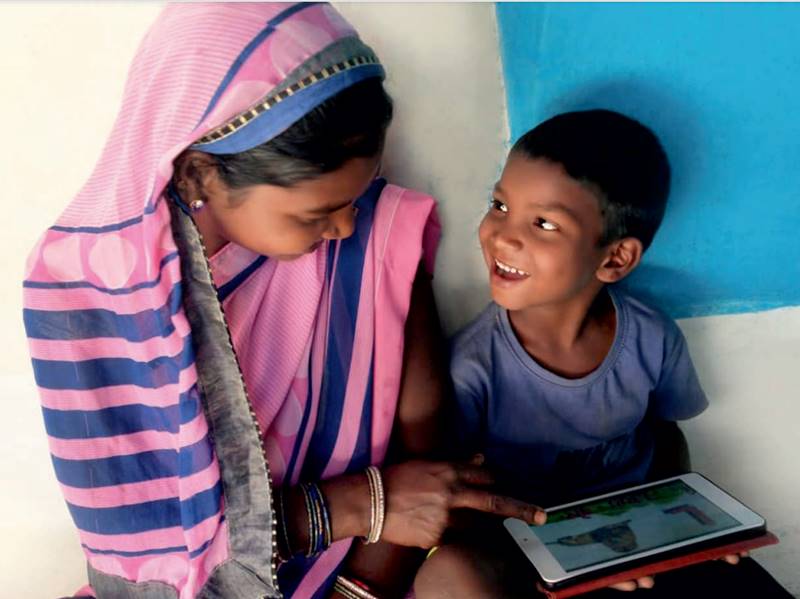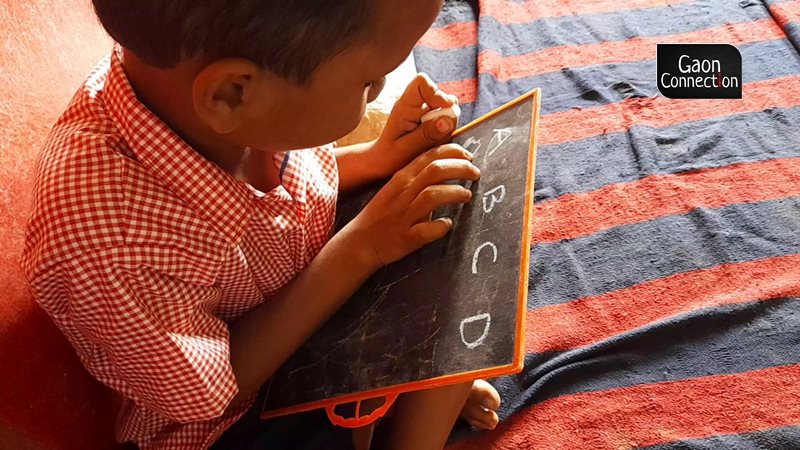More than 90 per cent school students in KVs and NVs had full or partial access to some digital device: Education Ministry
While a joint national survey in November 2021 by LIRNEasia, and ICRIER revealed that only 20 per cent of children in India had access to remote education during school closures, the Education Ministry stated in Parliament that Kendriya Vidyalaya Sangathan and the Navodaya Vidyalaya Samiti reported more than 98 per cent and 92.95 per cent of its students respectively had full or partial access to digital devices.


Smartphone ownership has doubled, from 36.5 per cent in 2018 to 67.6 per cent in 2021, however children’s access to them has been limited, revealed the Annual Status of Education Report (ASER) Rural. Photo: ASER 2021
The Minister of State for Education, Annpurna Devi, in response to a question raised in the Lok Sabha, on December 6, revealed that according to a survey in July 2020 Kendriya Vidyalaya Sangathan (KVS) and Navodaya Vidyalaya Samiti (NVS), 98 per cent of students in KVS had full or partial access to some digital devices. NVS reported 92.95 per cent of such access.
The question was raised with respect to school enrollment in COVID19, the surveys or actions taken by the government in that regard and the corrective steps taken thereof.
The minister also listed an array of initiatives taken by the government to promote uninterrupted schooling during the school closures owing to COVID19 lockdown that included employing various digital tools in the form of DIKSHA portal, SWAYAM portal, National Repository of Open Educational Resources portal.
Also Read: 8 out of 10 students didn’t have access to remote education during school closures : Report
The government has also started learning programmes in the form of offline learning tools through doordarshan channel, community radio, Central Board of Secondary Education podcasts, toll-free numbers, SMS based requests for audio content, localised radio content for edutainment, among others, the minister responded.

The question was raised by Vanga Geetha Viswanath, a Member of Parliament (MP) from Yuvajana Sramika Rythu Congress Party; Kotha Prabhakar Reddy, an MP from Telangana Rashtra Samithi; and Rakesh Singh, an MP from the ruling Bharatiya Janata Party.
Meanwhile, last month on November 12, another survey titled Access to Services During COVID-19 in Digital India was released by LIRNEasia, a regional think tank working on digital policy issues, and Indian Council for Research on International Economic Relations (an economic policy think tank based in New Delhi) revealed that only 20 per cent of children had access to remote education during school closures.
The national survey also stated that only 64 per cent of all households with enrolled school-going children had internet access, whereas the remaining didn’t. Within the households that had access to the internet, only 31 per cent were likely to receive remote education of some kind while only 8 per cent of households without internet said they received remote education, according to the LIRNEasia-ICRIER survey.

Pointing out the challenges faced by those who received education through virtual mediums, the survey stated that children were not being attentive, schools were unprepared to deliver online education and that data costs were high. Meanwhile, for those who didn’t receive education, poor connectivity (3G and 4G signals) in their area, and insufficient devices at home to meet the competing needs of all family members were the key issues they faced.
Smartphone ownership doubled during the pandemic but children’s access to them has been limited: Survey
Smartphone ownership has doubled, from 36.5 per cent in 2018 to 67.6 per cent in 2021, however children’s access to them has been limited, revealed the findings of the Annual Status of Education Report (ASER) Rural. 26.1 per cent, that is almost every fourth kid had no access to it, the findings revealed.
In 2018, 29.6 per cent of children in government schools had at least one smartphone at home which increased to 56.4 per cent in 2020. It further escalated to 63.7 per cent in 2021, the ASER survey stated.
The survey also outlined the state-wise increase in smartphone distribution. Kerala fared better than any other state in India – 97.5 per cent children had at least one smartphone available at home. Out of these 97.5 per cent, 76.2 per cent of children had access to smartphones at all times.
Another report released by the United Nations Children Emergency Fund (UNICEF) pointed that merely 8.5 per cent of students in India had access to the internet. The report titled ‘COVID-19 and School Closures: One year of education disruption’ stated that amongst the south Asian countries, internet access is available to 74.6 per cent students in Sri Lanka, 69.7 per cent students in Bangladesh, 36.6 per cent in Nepal, 9.1 per cent in Pakistan, 8.5 per cent in India, and 0.9 per cent in Afghanistan.
The report stated that pandemic, lockdowns, and the subsequent closure of schools impacted 201 million students worldwide. Out of these, 170 million students had no access to education for the past one year.

